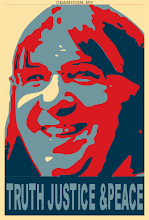The Fakins
Back in November of last year, I wrote about the announced sale of the Eakins masterpiece The Gross Clinic by Thomas Jefferson University, see The Clinic Sale is Gross, which caused much consternation and controversy, culminating in the joint purchase of the painting by the Philadelphia Museum of Art and the Pennsylvania Academy of Fine Arts, see Just One More Time.
Since then, TJU sold another Eakins painting to the original Gross Clinic purchaser, the Crystal Bridges Museum in Bentonville, Arkansas, which is to be built by Wal-Mart heiress Alice Walton. Now comes word that it's last Eakins painting has been sold, Jefferson sells off its last Eakins. Having weathered the spate of bad press in its handling of the sale of the first piece, Jefferson apparently decided to forge ahead in similar fashion:
Thomas Jefferson University has sold the last of its three large paintings by Thomas Eakins, the Portrait of Professor William S. Forbes, a 1905 masterwork commissioned by the university community in honor of its great anatomy professor, surgeon and activist.
Jefferson officials declined to disclose the price paid for the painting or the name of the private buyer. The sale, consummated Wednesday, was brokered by Christie's auction house.
Officials of the Jefferson alumni association, who have opposed similar recent sales by the university, said Wednesday that they had not been informed a sale had been made.
In a brief statement issued to Jefferson employees late Tuesday, Jefferson board chairman Brian Harrison said that 'a reproduction of the portrait will be placed in the University's Eakins Gallery' now that the painting has been dispatched.That gallery once housed Eakins' masterpiece, The Gross Clinic, which the university sold late last year for $68 million to a partnership of the Philadelphia Museum of Art and the Pennsylvania Academy of the Fine Arts. The massive canvas is currently on view at the academy; the two institutions will share it.
The reproduction of The Gross Clinic, now in the Eakins Gallery in the 1000 block of Locust Street, has become known as "the Fakins," according to university staff.
It's important to remember that selling off the art was not necessary for the survival of the institution; instead, it was just an easy way to raise money for expansion. Moreover, University administration obviously doesn't believe it is answerable to its constituencies in making decisions of this nature. And even worse, the art was given to the University by donations from alumni and other members of the community. As the Inquirer notes:
One could only hope that the community responds in kind -- with the power of the purse -- by withholding any contributions to TJU.But the university community specifically commissioned the Forbes portrait, which was paid for by contributions from alumni and students, and presented at Jefferson's 80th annual commencement in Forbes' honor at the end of his long career.
Lorraine King, head of the Jefferson alumni association, said Wednesday that she had not known of the sale. She said the news made her "feel sick."
* * * *
"They didn't say a word to us" about the Forbes, said King. "They don't want any publicity."
As for the fate of the Eakins pieces, as Lee of CultureGrrl said of the last sale of an Eakins to Wal-Mart heiress (after her unsuccessful attempt to get the Gross Clinic), If at First Alice Walton Doesn't Succeed... ...she tries again...and wins. In fact, it wouldn't surprise me if it turned out that Walton was the owner of the Forbes portrait as well.
It's a fitting end to this story. Jeff's version of art -- The Eakins Gallery -- is now merely a website showing what was and a room with a few fakes. When you've already sold your soul, who needs the real thing?

No comments:
Post a Comment